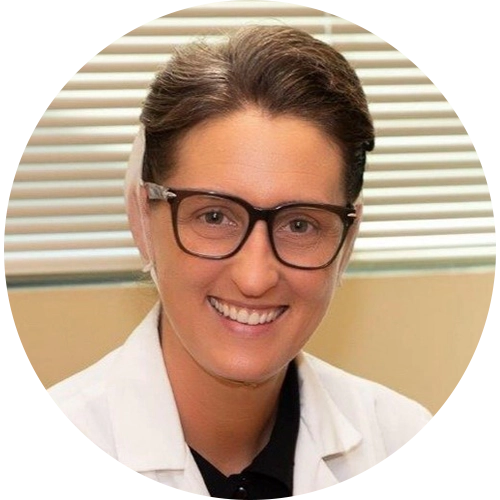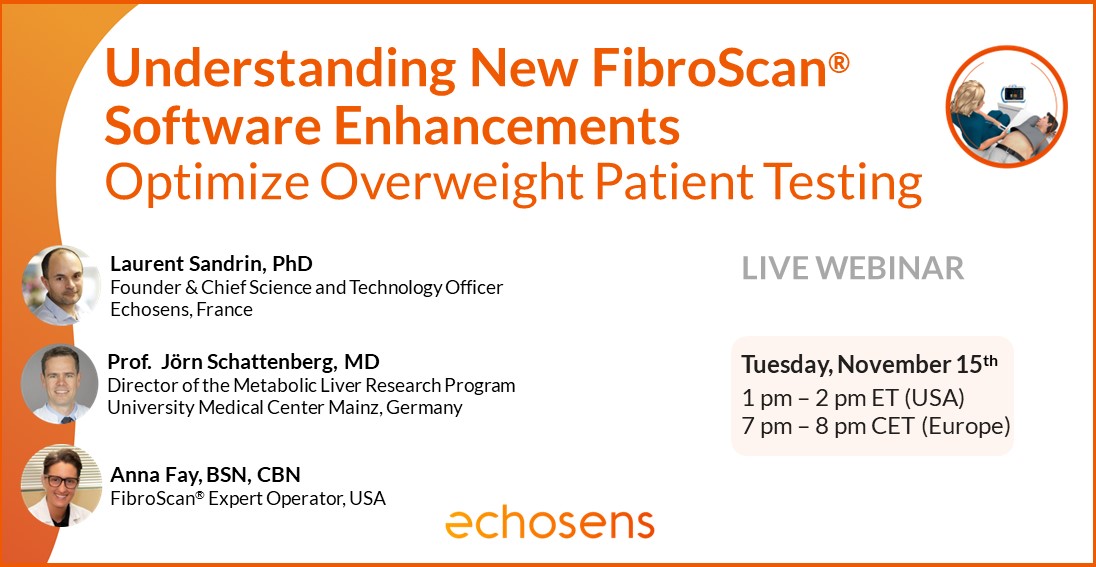Obesity is a common co-morbidity for patients with nonalcoholic fatty liver disease (NAFLD) and its more advanced form, nonalcoholic steatohepatitis (NASH). Diagnosis is made through the calculation of a controlled attenuation parameter (CAP™) score. More than 3,5000 peer-reviewed studies confirm that FibroScan® is the gold standard in CAP™ assessments and scoring, which provides a quantified picture of the amount of fat in the liver. Echosens’ SmartExam software extends the applicability among severely obese patient testing, which was previously a limitation.
Multiple studies confirm that the FibroScan® M and XL provides successful CAP measurements of 97% of NAFLD patients with Body Mass Index (BMI) scores of up to 53.3 kg/m2. But morbidly obese patients can still present challenges in obtaining accurate CAP measurements. Excess subcutaneous tissue and centralized adiposity in the measurement area can increase overestimation of CAP scores as a portion of this tissue will included in the measurement rather than just liver tissue.
Integration of SmartExam to Address Known Limitations
SmartExam software uses two new technologies to address these limitations: Continuous CAP is an improved acquisition method that assesses the viability of the CAP score. SmartDepth is an automated adaption of measurement depth during the assessment.
The Continuous CAP method introduces two computational changes to how CAP scores are calculated. A larger liver volume is sampled with 20 times more measurements during the assessment with a mean of 200 selected measurements, as compared to a median of 10 measurements with the Standard CAP method.1 Each individual measurement is selected only if dedicated validity criteria are met, such as measurements confirmed from a homogenous region. Measurements from heterogeneous regions are rejected as part of this calculation.
SmartDepth is an automation feature that automatically adapts the measurements of the liver according to the PCD. SmartDepth also increases the accuracy of liver stiffness measurement (LSM) to assess liver fibrosis and should increase the performance for monitoring the effect of treatments on liver fibrosis. Measurement of LSM and CAP is possible up to 30 mm PCD (+20%) with the M probe and 45 mm (+29%) with the XL probe. SmartDepth is not recommended for PCD in excess of 45 mm due to overestimation risk.
Examination Implications of SmartExam
FibroScan exam duration remains at one to five minutes with the introduction of SmartExam, and the process itself does not change for the patient. SmartExam is also compatible with most FibroScan technologies. The new technology is automated, though the technician views a new continuous CAP index gauge, which indicates the amount of successful ultrasound acquisitions. To receive a reliable CAP result, the gauge will read 100%. A second gauge monitors the number of LSM; at least 10 individual measurements are required to calculate the LSM. SmartExam also provides the technician with an automated probe recommendation tool.
These new technologies introduce automated adaptation into the exam process, which is anticipated to increase initial assessment of LSM and CAP scores as well as provide increased precision in monitoring the effects of treatment and patient lifestyle changes on liver fibrosis and liver steatosis over time. Providing SmartExam assessment data engages patients in their health and treatment journey. This technology will also have a positive effect in the context of clinical research and pharma trials where patient follow up is of particular importance. Most notably, the software includes and expands the demographic of patients that can now be examined.
Learn more about SmartExam.
References
- Audiere et al. (2021) Improved Ultrasound Attenuation Measurement Method for the Non-invasive Evaluation of Hepatic Steatosis Using FibroScan. UMB, 47, n° 11, p. 3181–3195



